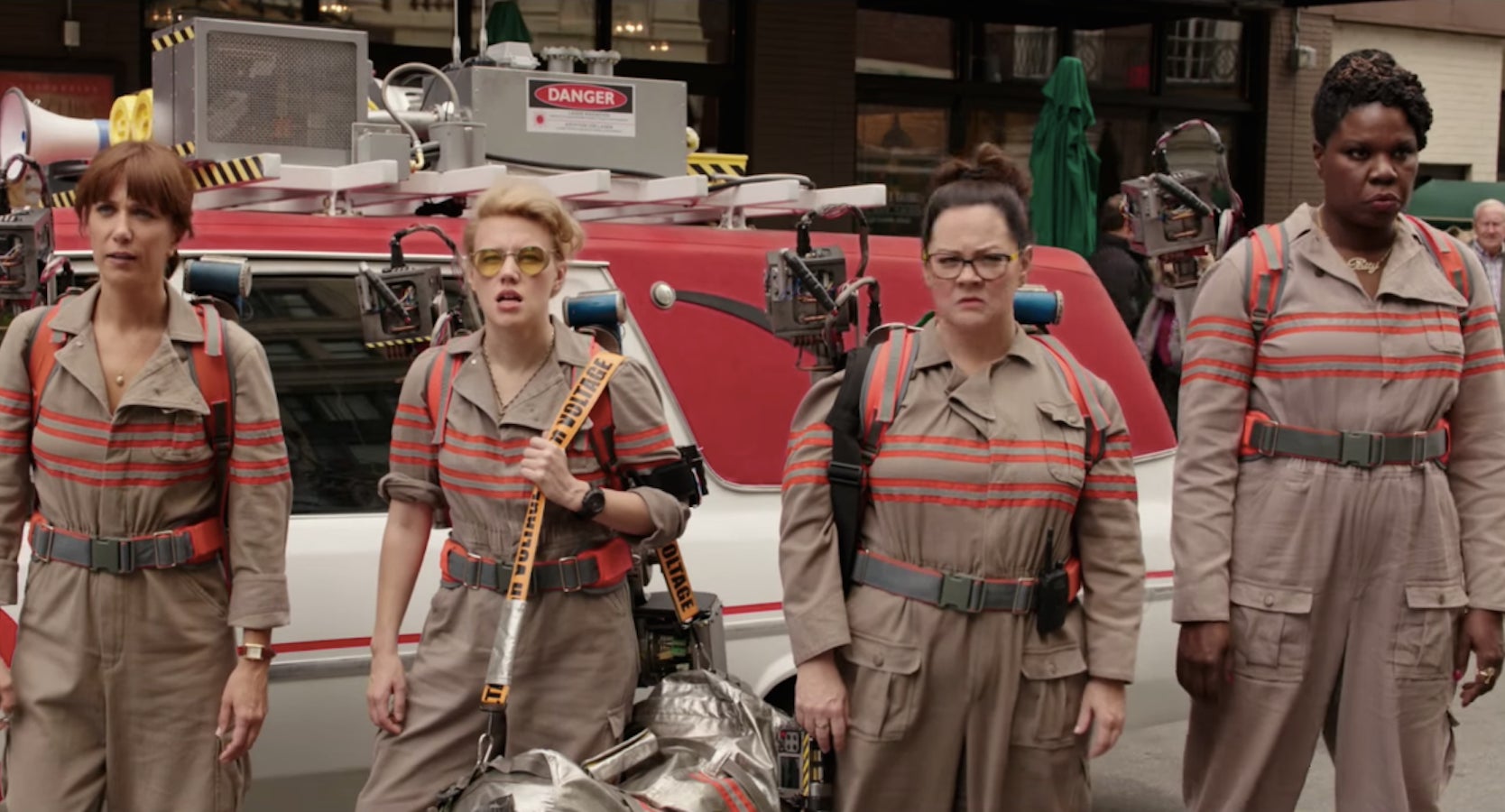“Ghostbusters” with women is 100% less sexist than the original
The skeptics are correct: Putting women in the lead roles in Ghostbusters fundamentally changes the franchise.


The skeptics are correct: Putting women in the lead roles in Ghostbusters fundamentally changes the franchise.
This isn’t to say that the reboot is unrecognizable. On the contrary, it delivers pretty much everything you’d expect to find in a Ghostbusters film. There are jokes about bodily fluids. There is ectoplasm spraying everywhere. There are power beams blasting away. There are plentiful cameos, not excluding the Stay Puff Marshmallow Man. (Tip: Stay all the way through to the credits for the best appearance.)
There is one big difference between the first Ghostbusters and the remake though—the emotional core of the new film doesn’t revolve around sexual harassment.
Although it’s ostensibly about busting ghosts, the plot of the original Ghostbusters involves disparate forces working together to stalk leading woman Dana Barrett (Sigourney Weaver.) Protagonist Peter Venkman (Bill Murray), evil antagonist Zuul, and the nebbish neighbor Louis Tully (Rick Moranis) all shower Dana with unwanted sexual attention. Dana seeks help from the Ghostbusters because Zuul has possessed her apartment; Venkman takes the case in large part to get close to her.
Venkman makes inappropriate comments basically whenever she’s in hearing distance, but Dana needs his help, so she can’t just tell him to go to hell. It’s a textbook case of harassment. At one point he even nibbles on her shoulder when she’s unconscious; like the rest of his smarmy come-ons, this is presented as a joke.
Louis also pursues her. When he becomes possessed, he actually gets to have sex with the possessed Dana. Again, this nonconsensual violation is presented as amusing—and even sexy.
The original film’s unhealthy obsession with Dana is the reason that, at times, it feels like a horror movie rather than a comedy. There’s a real, disturbing sadism in the scene where the chair in Dana’s apartment grabs her and she’s swallowed by her kitchen. This cruelty fitted in uneasily with film’s supposedly light tone. And the ending, with Dana and Venkman as a couple, is particularly sour. After being violated, Dana is delivered by the film as a victory prize to her harasser. How is this a happy ending?”
The new female-helmed Ghostbusters reboot does away with the creepiness. In fact, it does away with romance altogether.
Erin Gilbert (Kristen Wiig) is smitten with the perfect physique of receptionist Kevin (Chris Hemsworth), and even makes a couple of inappropriate-for-a-boss comments that recall Bill Murray’s Venkman. But she quickly realizes that Kevin is, as she says, “dumb as a bag of rocks,” so she gives up on sex and settles for admiring him from a distance. The rest of the women have no apparent significant others (male or otherwise).
In place of stalking, the new Ghostbusters substitutes female friendship and trust. When Erin was young, an old woman who lived next door died and her ghost visited Erin’s bedroom for a year. She was terrified, but no one believed her—except for Erin’s schoolmate Abby Yates (Melissa McCarthy.) While the first Ghostbusters blithely ignored Dana’s trauma, the reboot takes pains to acknowledge and address Erin’s.
None of these changes are accidental. Yes, the reboot shows a lot of affection for the original film, but there’s also a critique of it. Bill Murray shows up as a professional skeptic; his smarmy, condescending treatment of the female Ghostbusters is right in line with the smarmy, condescending way he treated Dana in the first film. In the remake, his hyperbolic comeuppance is one of the films’ better twists.
The villain narrative quietly recalls the original film as well. Rowan North (Neil Casey) is a nerd with a grudge; a quiet loner filled with rage that his genius isn’t recognized. It’s easy to read him as a dig at the misogynist internet trolls who were so upset about the reboot’s casting choices. Indeed, the movie explicitly mocks its critics in a characteristic bit of self-awareness. But Rowan also resembles the original heroic Ghostbusting dudes. The first film presented nerdy genius guys as its heroes; the second makes it clear that male geeks with a grudge aren’t always so benign.
From the treatment of Murray to the unapologetic embrace of sisterhood, there’s plenty in the film to enrage fans who feel threatened by a female-led Ghostbusters. But the truth is, in most respects, the reboot’s reworking is for the best. Today, the snickering harassment in the original comes off as dated, cramped, and not much fun to watch. The reboot, paradoxically, feels much more comfortable in its own skin. It’s as if, in exorcizing the original’s misogyny, Ghostbusters has at last managed to find the soul it thought it had all along.